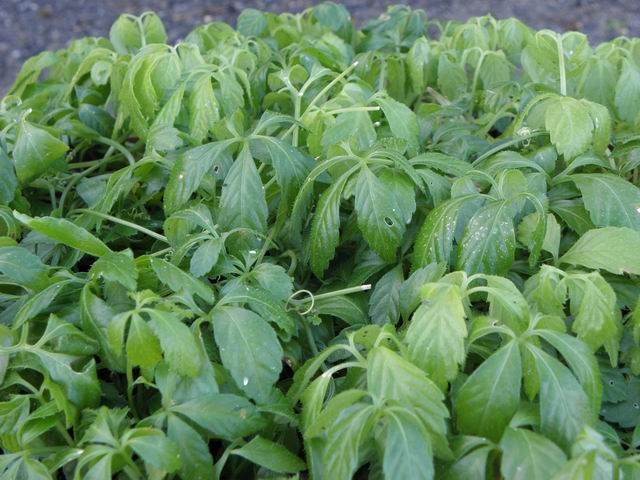(Nederlands)
De plant werd voor het eerst beschreven in 1406 door Zhu Xiao, die een beschrijving en schets presenteerde in het boek Materia Medica for Famine als een overlevingsvoedsel in plaats van een medicinaal kruid. van Materia Medica gepubliceerd in 1578, waarin jiaogulan wordt geïdentificeerd voor de behandeling van verschillende aandoeningen zoals hematurie, oedeem in de keelholte en nek, tumoren en trauma. De plant wordt gebruikt in de volksgeneeskunde, meestal als kruidenthee, maar kan ook worden gebruikt als alcoholextract of in voedingssupplementen. Het wordt door de lokale bewoners beschreven als het "onsterfelijkheidskruid", omdat een groot aantal ouderen in de provincie Guizhou aangaf de plant regelmatig te consumeren. Je kunt de bladeren in een salade eten, of gestoomd of in blokjes gesneden voor thee. De bladeren zijn zo zoet dat ze worden gebruikt in plaats van suiker. Het wordt ook wel Southern Ginseng genoemd omdat het, net als ginseng, onsterfelijkheidskruid een adaptogeen kruid is, dus het compenseert stress en ondersteunt het immuunsysteem, het geheugen, het uithoudingsvermogen en het uithoudingsvermogen. Onsterfelijkheidskruid overtreft eigenlijk veel meer dan ginseng in het aantal saponinen en bevat ook veel aminozuren, vitamines en mineralen zoals ijzer, calcium, zink, magnesium, fosfor en mangaan. Plaats de stekken in een glas water totdat ze wortelen, zet ze dan op of plant ze buiten. Je kunt Jiaogulan ook kweken door zaden direct in de tuin te planten na de laatste vorst in de lente, of ze binnenshuis te planten in potten gevuld met een vochtige startmix.
(English)
The plant was first described in 1406 by Zhu Xiao, who presented a description and sketch in the book Materia Medica for Famine as a survival food rather than a medicinal herb The earliest record of jiaogulan's use as a drug comes from herbalist Li Shizhen's book Compendium of Materia Medica published in 1578, identifying jiaogulan for treating various ailments such as hematuria, edema in the pharynx and neck, tumors, and trauma. The plant is used in folk medicine, typically as an herbal tea, but may be used as an alcohol extract or in dietary supplements. It is described by the local inhabitants as the "immortality herb", because a large number of elderly people within Guizhou Province reported consuming the plant regularly. You can eat the leaves in a salad, or steamed, or diced for tea. The leaves are sweet enough that they are used instead of sugar. It is sometimes called Southern Ginseng because like ginseng, Immortality herb is an adaptogen herb, so it counterbalances stress and supports the immune system, memory, endurance and stamina. Immortality herb actually greatly exceeds ginseng in the number of saponins, and is also high in amino acids, vitamins, and minerals such as iron, calcium, zinc, magnesium, phosphorous and manganese. Place the cuttings in a glass of water until they root, then pot them up or plant them outdoors. You can also grow Jiaogulan by planting seeds directly in the garden after the last frost in spring, or plant them indoors in pots filled with moist seed-starting mix.
|




